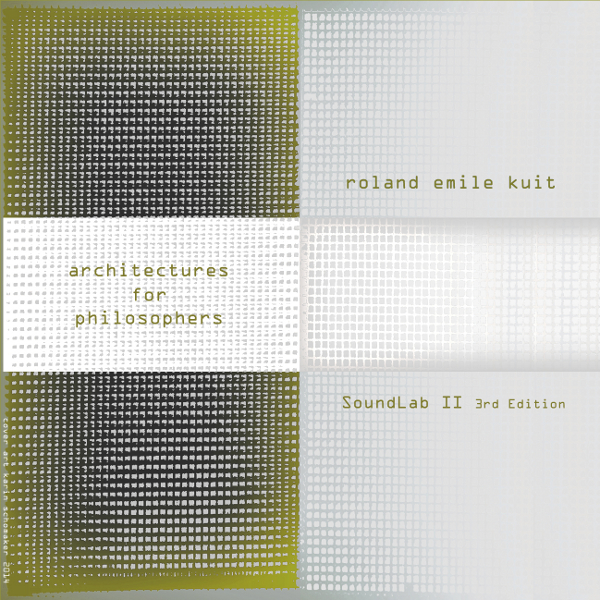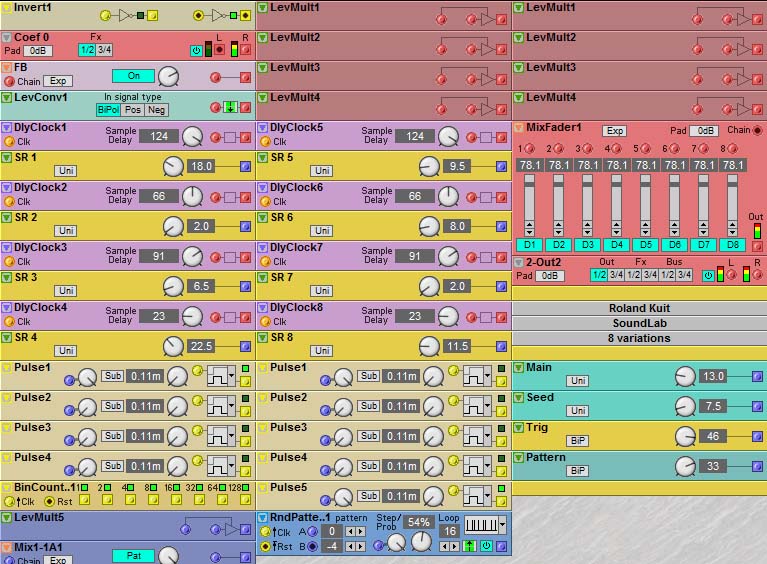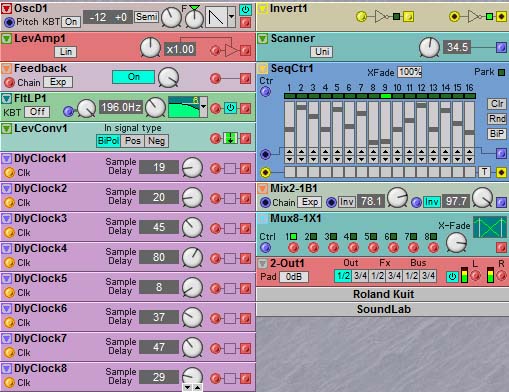


4 0 y e a r s M o d u l a r M a s t e r y o f R o l a n d K u i t

Order at Donemus here:


Teaching and certification:

Interactive Html/PDF e-book
The Clavia NMG2 Demo soft synthesizer included
For chapters see index


 4 0 y e a r s M o d u l a r M a s t e r y o f R o l a n d K u i t |
|
 |
Order at Donemus here:   Teaching and certification:  |
|
Interactive Html/PDF e-book The Clavia NMG2 Demo soft synthesizer included For chapters see index |
Update: For Mac users please go here to
download OSX compatible NMG2Demo sotware:
http://www.stage-engine.com/micro-modular-1/
Scroll down.
Written by Enrico Cosimi on . Posted in Software, Tutorial
Da molti anni, nella comunità dei modular addicted (analog e virtual), il nome di Roland Kuit è pronunciato con rispetto misto a timore: già dall’epoca del primo Clavia Nord Modular, storici tutorial firmati RK hanno insegnato a legioni di musicisti come trare fuori il meglio dal proprio strumento senza cadere nella banalità del classico VCO-VCF-VCA, ovvero ad utilizzare in maniera non banale strumenti apparentemente semplici. O anche meno semplici.
Oggi, dopo aver aperto la strada con SoundLab I, Roland Kuit ha presentato il suo nuovo lavoro SoundLab II, destinato a fornire molto materiale a chiunque – dotato di Clavia Nord Modular G2 – voglia spremere il massimo dal proprio strumento seguendo un approccio di programmazione assolutamente non convenzionale.
Di Enrico Cosimi
Per programmazione non convenzionale, intendiamo quel modo di procedere nell’assemblaggio della patch che prevede l’impiego di strategie di basso livello (inteso nel senso informatico del termine), quindi la costruzione di logiche di funzionamento molto personali che non usano moduli preconfigurati, ma che estraggono i comportamenti più consoni partendo da elementi semplici.
Un esempio (molto) banale potrebbe essere la produzione di un’onda quadra attraverso comparazione di un’onda dente di sega: due forme d’onda simultaneamente disponibili, a dispetto del design tradizionale degli oscillatori Clavia, che prevede la generazione di una e un’unica onda per volta. Ma il lavoro di Kuit è molto più approfondito e non si limita certo alla comparazione delle saw waves.
SoundLab II è un e-book organizzato per essere gestito (in html) attraverso Internet Explorer, Chrome o Opera (non Safari, attenzione!!!), che mette il musicista di fronte a precise aree di programmazione relative a: Oscillators, Filters, Patterns and Sequencers, Logic, Miscellaneous, Shapers and Audio, Audio Processing, Appendix. In ciascuna area, il musicista troverà le schermate delle patches e, cliccandoci sopra (ripetiamo, non in Safari), invierà automaticamente la patch al Nord Modular G2 Demo Editor o – in alternativa – all’Editor dello strumento hardware, potendo così ascoltare praticamente in tempo reale la programmazione.
L’impatto è devastante; analizzando le strutture programmate, l’utente consapevole è portato immediatamente ad alcune constatazioni che, auspicabilmente, preludono ad un’approfondita sessione di studio:
Spremere moduli noti per avere comportamenti meno prevedibili è una dimostrazione di grande virtuosismo: dal punto di vista timbrico – ma è banale, parlando di NMG2 – non aspettatevi brass, strings e cose del genere; la direzione è quella della ricerca sonora, del comportamento inatteso, del glitch raffinato o delle formanti costruite sfuttando turbolenze dei random generator o altre piacevolezze.
SoundLab II può essere acquistato attraverso PayPal a 125 euro; per questa cifra, vi portate a casa 750 patches inedite, impostate su un approccio timbrico che non troverete da altre parti, sulle quali potrete passare tranquillamente i prossimi anni a studiare, studiare, studiare, studiare…
Assolutamente consigliato.
Tra l’altro, se conoscete l’olandese o l’inglese, perchè non contattare direttamente l’autore per una master class ad hoc?




Copyright © 2012 - 2025 Roland Kuit. SONIC CULTURES
LAB, Laboratory of Patching and SoundLab are trademarks of Roland Emile Kuit.
All Rights Reserved.
Unauthorized duplication and distribution of copyrighted material
violates Federal Law.
This website collects no personal data.